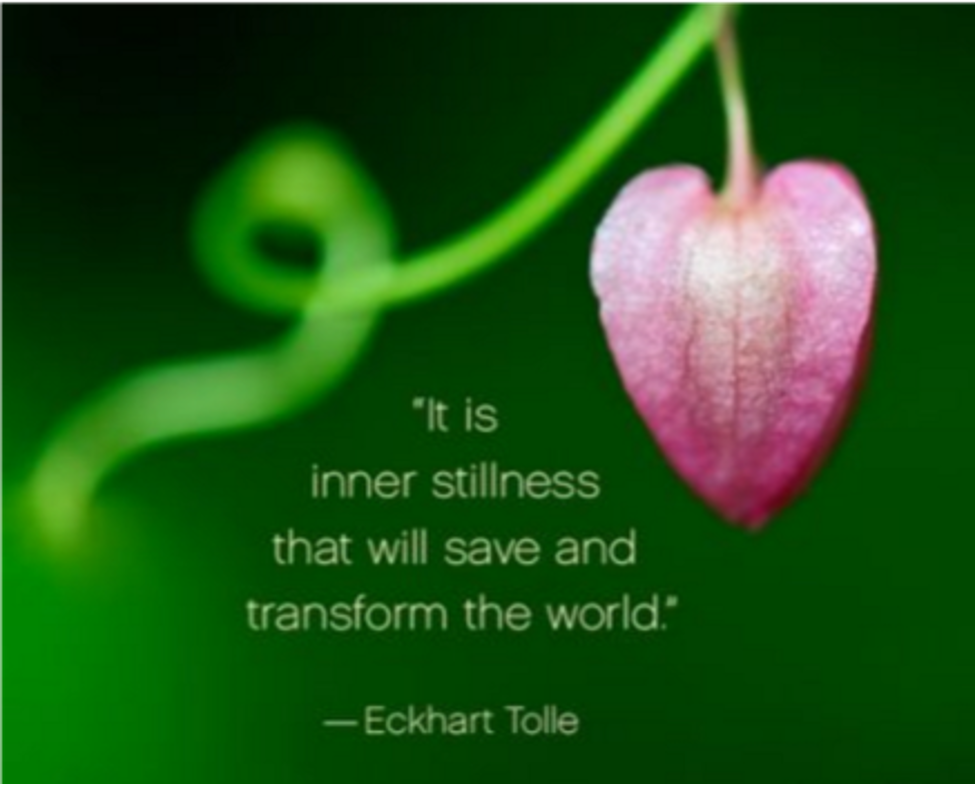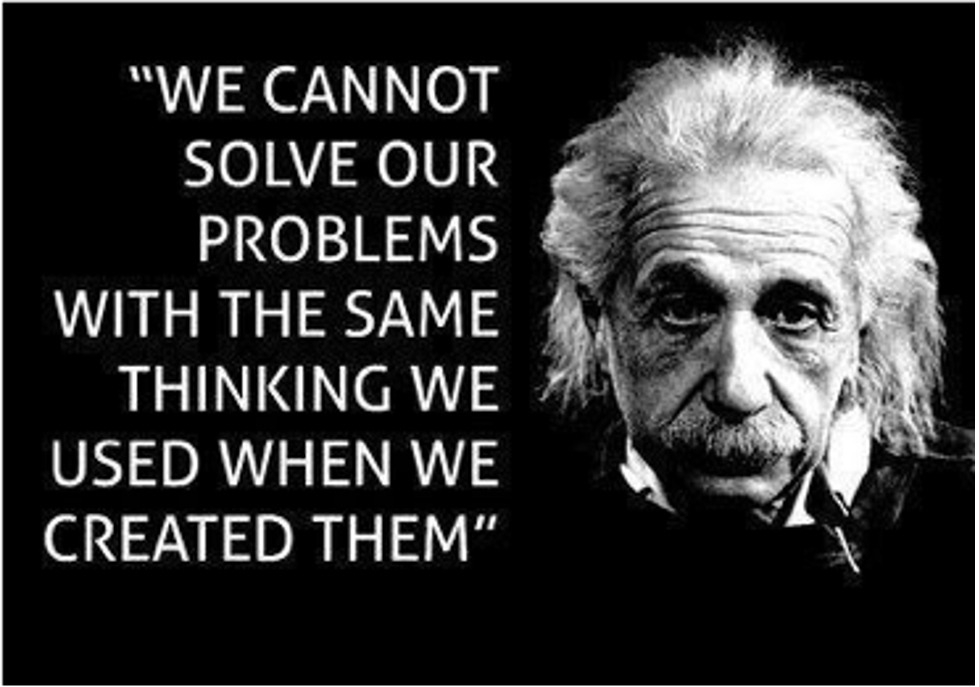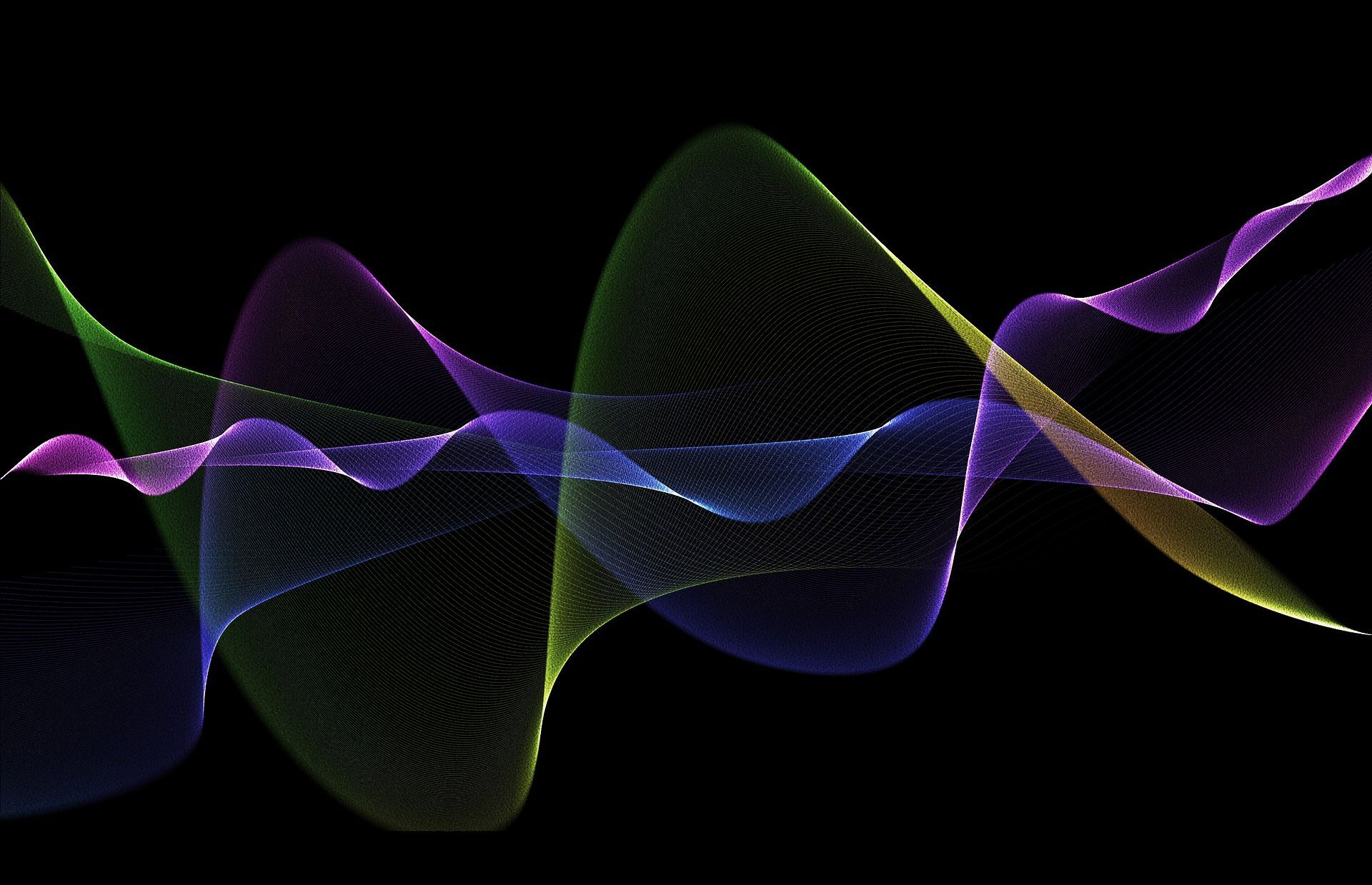Understanding Meditation and Mindfulness Equals Presence
Share this Article
The Healing Den constantly advocates being mindful and taking the time to meditate for your well-being while strengthening your healing presence. An interesting further development is that as this practice evolves, it develops and supports a deeper sense of understanding oneself and others appears. A frequent comment is “I feel more me, more present to myself.”
The cultivation of mindfulness has roots in Buddhism, but most religions include some type of prayer or meditation technique that helps shift your thoughts away from your usual preoccupations toward an appreciation of the moment and a larger perspective on life. Rituals and liturgies are often used to sway the mind into silence and the person into a sense of the sacred.
Ellen Langer, a Harvard professor defined mindfulness as "the simple act of noticing new things." More specifically, mindfulness is a type of meditation that focuses on being intensely aware of what you're sensing and feeling in the moment, without interpretation or judgment. Practicing mindfulness involves breathing methods, guided imagery, and other practices to relax the body and mind and help reduce stress[1].
Mindfulness and Well-being. Meditation can help you experience thoughts and emotions with greater balance and acceptance. It has been shown to improve attention.
Increasing your capacity for mindfulness supports many attitudes that contribute to a satisfied life. Being mindful makes it easier to savor the pleasures in life as they occur, helps you become fully engaged in activities, and creates a greater capacity to deal with adverse events. By focusing on the here and now, many people who practice mindfulness find that they are less likely to get caught up in worries about the future or regrets over the past, are less preoccupied with concerns about success and self-esteem, and are better able to form deep connections with others.
Mindfulness and Physical health. If greater well-being isn’t enough of an incentive, scientists have discovered that mindfulness techniques help improve physical health in several ways. Mindfulness can: help relieve stress, treat heart disease, lower blood pressure, reduce chronic pain, improve sleep, and alleviate gastrointestinal difficulties.
Mindfulness and Mental health. In recent years, psychotherapists have turned to mindfulness meditation as an important element in the treatment of several problems, including depression, substance abuse, eating disorders, couples’ conflicts, anxiety disorders, and obsessive-compulsive disorder.

How does mindfulness work?
Some experts believe that mindfulness works, in part, by helping people to accept their experiences—including painful emotions—rather than react to them with aversion and avoidance. This acceptance tends to come from the dissolution of tightly held beliefs that constrict perceptions into binary perceptions of good-bad, right, wrong, etc. The expanded awareness occurs during meditation (mindfulness) in a transforming process where the either/or paradigm expands into a both/and perception until it crescendos into a more than awareness of what is or could bethe reality one is experiencing. Judgments against oneself and other persons are revealed as antiquated and not applicable to the present moment. The binary rules of reality dissolve.
In addition, it tends to reduce irrational, maladaptive, and self-defeating thoughts by revealing their emotional charge fixed by past events that are no longer true. In other words, it is like a perfect recording of the past is spliced into the present perceptions as if the past event is happening in this present moment. Suddenly, a surreal recognition of what has been perceived as real is now understood as a self-created perception of reality. One has been living in a world of Memorex; that is unfinished critical and unexpected events including trauma, biases, beliefs and misbehavior, cultural and family values, dynamics, and misbehaviors, and life experiences that have been constructed as meaning making for self-protection that often is frozen in a moment in time.
Mindfulness Techniques
There is more than one way to practice mindfulness, but the goal of any mindfulness technique is to achieve a state of alert, focused relaxation by deliberately paying attention to thoughts and sensations without judgment. This allows the mind to refocus on the present moment. All mindfulness techniques are a form of meditation. All mindfulness and mediation require a disciplined structure to grant oneself permission at the deepest level to invest time into your own personal development and growth.
General Techniques
Basic mindfulness meditation. Sit quietly and focus on your natural breathing or on a word or “mantra” that you repeat silently. Allow thoughts to come and go without judgment and return to your focus on breath or mantra. The most well-known mantra is focusing on feeling and vocalizing OM.
Live in the moment. Try to intentionally bring an open, accepting and discerning attention to everything you do. Find joy in simple pleasures. This requires the mindfulness to remember to be mindful Another way to describe this process is to learn to participate and witness oneself by shifting your focus and attention between acting or doing and observing.
Accept yourself. Treat yourself the way you would treat a good friend. Suspension of the monkey mind, Council of lunatics, Voices in the background,and whatever else distracts you is imperative. Mindfulness is being able to acknowledge the voices, watch them and let them go…a first step in regaining control of your thoughts.
Focus on your breathing. When you have negative thoughts, try to sit down, take a deep breath and close your eyes. Focus on your breath as it moves in and out of your body. Sitting and breathing for even just a minute can help. Recognize the voices in your head are only recordings that once served now prevent your being your full self.
Body sensations. Notice subtle body sensations such as an itch or tingling without judgment and let them pass. Notice each part of your body in succession from head to toe. Reframe from fixing any discomfort and assume it is simply energy frozen in the cellular tissues that are seeking release[2]. See sample mediations later in this article.
Sensory. Notice sights, sounds, smells, tastes, and touches. Name them “sight,” “sound,” “smell,” “taste,” or “touch” without judgment and let them go. This ties directly to the prior paragraph. Much of life has taught us to numb our senses except in very specific situation. Senses have memories just as much as cellular tissue and our mind. The difference between the mind and the sensory memories is the latter release energy and restore full body sensations. As a child, these full body sensations could be overwhelming or discouraged and therefore become frozen. Mindfulness sees each of the irritating or unaccepted sensations as opportunities for reclaiming one’s right to a full experience of life.
Emotions. Allow emotions to be present without judgment. Practice a steady and relaxed naming of emotions: “joy,” “anger,” “frustration.” Accept the presence of the emotions without judgment and let them go. For example, if we look at emotions as water that can freeze, flow, turn to vapor, we understand all the variants are still simply expressions of water. In the human experience, all emotional variants are expressions of internal experiences. When we dispense with judgements of “good or bad”, and “pleasant and unpleasant” we derive an entirely new awareness of satisfying expressions that simply need to become mature expressions of each emotion.
Urge surfing. Cope with cravings (for addictive substances or behaviors) and allow them to pass. Notice how your body feels as the craving enters. Replace the wish for the craving to go away with the certain knowledge that it will subside. Addictions in the forms of drugs, sugar, alcohol, sex, violence, are like 3 dimensional memories that take control of one’s sense of self and replaces it with a creative adjustment to survive some overwhelming deficiency in one’s experience, often to survive the power of the moment. A concerted effort is needed to re-establish self-control and therefore self-efficacy to be able to subordinate one’s self to the addiction or to create a life without the need to not exist[3]. Mindfulness and meditation can support re-establish control over these traumatic and addictive impulses.
Mindfulness Meditation and Other Practices
Mindfulness can be cultivated through mindfulness meditation, a systematic method of focusing your attention. You can learn to meditate on your own, following instructions in books or on tape. However, you may benefit from the support of an instructor or group to answer questions and help you stay motivated. Look for someone using meditation in a way compatible with your beliefs and goals.

Getting Started On Your Own
Some types of meditation primarily involve concentration—repeating a phrase or focusing on the sensation of breathing, allowing the parade of thoughts that inevitably arise to come and go. Concentration meditation techniques, as well as other activities such as tai chi or yoga, can induce the well-known relaxation response, which is very valuable in reducing the body’s response to stress.
You can also try more structured mindfulness exercises, such as:
Body scan meditation. Lie on your back with your legs extended and arms at your sides, palms facing up. Focus your attention slowly and deliberately on each part of your body, in order, from toe to head or head to toe. Be aware of any sensations, emotions or thoughts associated with each part of your body. From a healing presence, perspective, it is supportive to linger at every area of the body until you notice a shift of energy or change in temperature. This is awakening consciousness in the cellular memory and/or bringing more life force to that area.
Sitting meditation. Sit comfortably with your back straight, feet flat on the floor and hands in your lap. Breathing through your nose, focus on your breath moving in and out of your body. If physical sensations or thoughts interrupt your meditation, note the experience and then return your focus to your breath. Similar to the body scan, the focus is on your experience of breathing. Often, you will quickly drift to a series of thoughts that distract the process. Regain control of your mind and continue to breath.
Walking meditation. Einstein was known for walking meditations in his office and amongst nature. Similarly, labyrinths and medicine wheels were walking forms of medications that preoccupied the mind with focus on the ritualistic structure. Therein the mind quiets and a window opens for a new knowing.
Find a quiet place 10 to 20 feet in length and begin to walk slowly. Focus on the experience of walking, being aware of the sensations of standing and the subtle movements that keep your balance. When you reach the end of your path, turn and continue walking, maintaining awareness of your sensations. Focus on the walk, step by step.
For example, years ago, a Cheyenne elder, we will call Chief Joseph, and I met at a Sundance in South Dakota. He had been diagnosed with stage 4 lung cancer. He asked if I would perform a healing ceremony on his behalf. I agreed. The Sundance was deep in a narrow valley on the Rose Bud reservation. On one side of the rising hills there was a medicine wheel that was quite old. We met at the bottom of the hill. Joseph told he me could not climb the hill to the medicine wheel because of his limited breathing capacity. I looked at him and said we were not going to climb the hill; we were going to pray ourselves to the top by putting one foot in front of the other in gratitude. Our heads were focused on our feet. We scaled the hill without hesitation focused on walking.
Concentration
Mindfulness meditation builds upon concentration practices. Here’s how it works:
Go with the flow. In mindfulness meditation, once you establish concentration, you observe the flow of inner thoughts, emotions, and bodily sensations without judging them as good or bad. Easier said than done as most know. This requires disciplined awareness to not became a captive of your thoughts and to simply observe them. I often use humor and laugh at myself for falling into my self-created thought trap; then I start over.
Pay attention and Know You are in Control of Your Experience. As noted in the prior paragraph, you will notice external sensations such as sounds, sights, and touch that make up your moment-to-moment experience. The challenge is not to latch onto a particular or familiar idea, emotion, or sensation, or to get caught in thinking about the past or the future. Instead, you watch what comes and goes in your mind and discover which mental habits produce a feeling of well-being or suffering.
Stay with it. At times, this process may not seem relaxing at all, in fact, may find it irritating and so uncomfortable they immediately stop. Repatterning oneself requires commitment and discipline and over time it will lead to greater happiness and self-awareness as you become comfortable with a wider and wider range of your experiences.
Practice Acceptance
Above all, mindfulness practice involves accepting whatever arises in your awareness at each moment. It involves being open to the experience without judgement, like being kind and forgiving toward yourself.
Some tips to keep in mind:
Gently redirect. If your mind wanders into planning, daydreaming, or criticism, notice where it has gone and gently redirect it to sensations in the present.
Try and try again. If you miss your intended meditation session, simply start again.
By practicing accepting your experience during meditation, it becomes easier to accept whatever comes your way during the rest of your day.
Cultivate Mindfulness Informally
In addition to formal meditation, you can also cultivate mindfulness informally by focusing your attention on your moment-to-moment sensations during everyday activities. This is done by single-tasking—doing one thing at a time and giving it your full attention. As you shower, brush your teeth, pet the dog, drive to work or eat an apple, slow down the process and be fully present as it unfolds and involves all of your senses. Notice the scent of the shampoo or soap instead of the random thoughts in your mind. Notice the taste of breakfast instead of chomping and reading the paper. Notice your experience throughout the day.

Mindfulness Exercises
If mindfulness meditation appeals to you, going to a class or listening to a meditation tape can be a good way to start. In the meantime, here are two mindfulness exercises you can try on your own.
Basic Mindfulness Meditation. This exercise teaches basic mindfulness meditation.
- Sit on a straight-backed chair or cross-legged on the floor.
- Focus on an aspect of your breathing, such as the sensations of air flowing into your nostrils and out of your mouth, or your belly rising and falling as you inhale and exhale.
- Once you’ve narrowed your concentration in this way, begin to widen your focus. Become aware of sounds, sensations, and your ideas.
- Embrace and consider each thought or sensation without judging it good or bad. If your mind starts to race, return your focus to your breathing. Then expand your awareness again.
Learning to Stay in the Present. A less formal approach to mindfulness can also help you to stay in the present and fully participate in your life. You can choose any task or moment to practice informal mindfulness, whether you are eating, showering, walking, touching a partner, or playing with a child or grandchild. Attending to these points will help:
- Start by bringing your attention to the sensations in your body
- Breathe in through your nose, allowing the air downward into your lower belly. Let your abdomen expand fully.
- Now breathe out through your mouth
- Notice the sensations of each inhalation and exhalation
- Proceed with the task at hand slowly and with full deliberation
- Engage your senses fully. Notice each sight, touch, and sound so that you savor every sensation.
- When you notice that your mind has wandered from the task at hand, gently bring your attention back to the sensations of the moment.
Invest in Yourself. Aim to practice mindfulness every day for about six months. Over time, you might find that mindfulness becomes effortless. Think of it as a commitment to reconnecting with and nurturing yourself
The effects of mindfulness meditation tend to be dose-related — the more you do, the more effect it usually has. Most people find that it takes at least 20 minutes for the mind to begin to settle, so this is a reasonable way to start. If you’re ready for a more serious commitment, Jon Kabat-Zinn recommends 45 minutes of meditation at least six days a week. But you can get started by practicing the techniques described here for shorter periods.
Guided Meditations. Some people find it easier to start with guided meditations and brain frequency entrainment, support the brain through sound to move to a deeper state of consciousness. Below are several links to guided meditations and my shamanic drumming recording for those that meditate with drums.
iAwake. For those that seek more advanced support, iAwake provides excellent products. There is a discount for all Healing Den affiliates. Go to iAwake.com to see catalog and get 25% Discount for All Purchases. Use Promo Code: CLEVELAND-IAWAKE-25
Samadhi Guided Mediations
https://www.youtube.com/watch?v=oZGqaDSOYxI
https://www.youtube.com/watch?v=J7WCK5DK4sw
https://www.youtube.com/watch?v=ded5S6ETePw
https://www.youtube.com/watch?v=MZBJJrOJOKY
https://www.youtube.com/watch?v=t0pTRLaDpgU
Healing Tones
https://www.youtube.com/watch?v=go99WqXWGgk
https://www.youtube.com/watch?v=IY4MVNO74y4
Shamanic Drumming
https://vimeo.com/414605290/1d91eab3d0
http://www.onewhitehorsestanding.com/resources/audio/herb-drumming.mp3
Footnotes
[1]Jon Kabat-Zinn, founder and former director of the Stress Reduction Clinic at the University of Massachusetts Medical Center, demonstrated that practicing mindfulness can bring improvements in both physical and psychological symptoms as well as positive changes in health, attitudes, and behaviors.
[2]Peter Levine in Taming the Tiger suggested that we freeze moments in time in our cellular tissueshttps://traumahealing.org/
[3]Addictions and trauma are a form of dissociation that makes the day-to-day person become invisible while the creative adjustment, an illusory sense of self takes control. This is not to diminish the power of trauma or addiction, however it is to say that to overcome them, requires disciplined mindfulness often found in meditation.
Sources
· Positive Psychology: Harnessing the Power of Happiness, Personal Strength, and Mindfulness, a special health report published by Harvard Health Publishing.
· https://www.helpguide.org/harvard/benefits-of-mindfulness.htm
References
Jon Kabat-Zinn.
- Mindfulness Meditation for Everyday Life. Piatkus, 1994. ISBN 0-7499-1422-X.
- Wherever You Go, There You Are: Mindfulness Meditation in Everyday Life. Hyperion Books, 1994. ISBN 1-4013-0778-7.
- Full catastrophe living: how to cope with stress, pain and illness using mindfulness meditation. Piatkus, 1996. ISBN 0-7499-1585-4.
- The Power of Meditation and Prayer, with Sogyal Rinpoche, Larry Dossey, Michael Toms. Hay House, 1997. ISBN 1-56170-423-7.
- Coming to Our Senses: Healing Ourselves and the World Through Mindfulness. Hyperion, 2006. ISBN 0-7868-8654-4.
- The mindful way through depression: freeing yourself from chronic unhappiness, by J. Mark G. Williams, John D. Teasdale, Zindel V. Segal, Jon Kabat-Zinn. Guilford Press, 2007. ISBN 1593851286.
- Arriving at Your Own Door. Piatkus Books, 2008. ISBN 0-7499-2861-1.
- Letting Everything Become Your Teacher: 100 Lessons in Mindfulness. Dell Publishing Company, 2009. ISBN 0-385-34323-X.
- The Mind's Own Physician: A Scientific Dialogue with the Dalai Lama on the Healing Power of Meditation, co-authored with Richard Davidson (New Harbinger, 2012) (based on the 13th Mind and Life Institute Dialogue in 2005).
- Mindfulness for Beginners: reclaiming the present moment - and your life. Sounds True, Inc., 2012. ISBN 978-1-60407-753-7.
Ellen J. Langer
- Langer, Ellen J. (1989). Mindfulness. Reading, MA: Addison Wesley. ISBN 978-0-201-52341-6.
- Langer, Ellen J. (1997). The Power of Mindful Learning. Reading, MA: Addison-Wesley. ISBN 978-0-201-33991-8.
- Langer, Ellen J. (2005). On Becoming an Artist. New York: Ballantine Books. ISBN 978-0-345-45629-8.
- Langer, Ellen J. (2009). Counter clockwise: mindful health and the power of possibility. New York: Ballantine Books. ISBN 978-0-345-50204-9.
Daniel J Siegel, MD
- The Developing Mind: Toward a Neurobiology of Interpersonal Experience (New York: Guilford Press, 1999)
- Healing Trauma: Attachment, Mind, Body and Brain (New York: WW Norton & Company, 2003). Co-edited with Marion Solomon.
- The Mindful Brain: Reflection and Attunement in the Cultivation of Well-Being (New York: WW Norton & Company, 2007)
- The Mindful Therapist: A Clinician's Guide to Mindsight and Neural Integration (New York: WW Norton & Company, 2010)
- Mindsight: The New Science of Personal Transformation (New York: Bantam, 2010)
- The Developing Mind, Second Edition: How Relationships and the Brain Interact to Shape Who We Are (New York: Guilford Press, 2012). ISBN 978-1-4625-0390-2.
- Mind: A Journey to the Heart of Being Human (New York: WW Norton & Company, 2016)
- Aware: The Science and Practice of Presence (New York: Tarcher Perigee, 2018).









